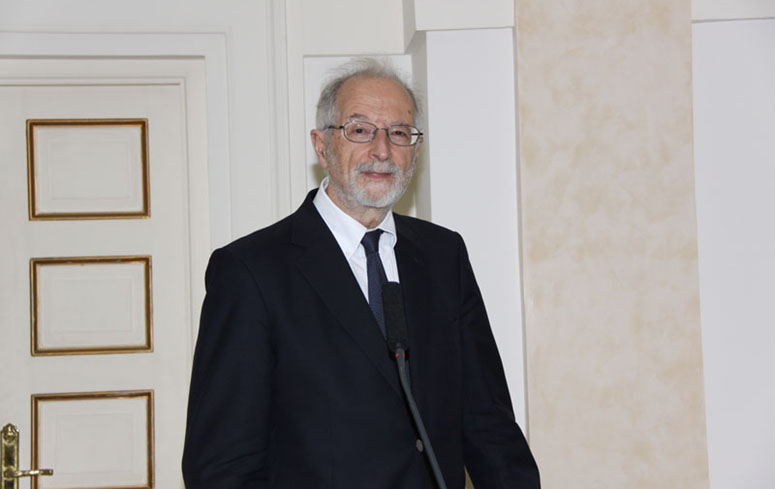Luis Enjuanes has been working in the virology field for more than 40 years, including 28 years in coronaviruses. His present interest is the study of the mechanism of replication, transcription, virulence and virus-host interaction in coronavirus. He has published more than 198 peer reviewed articles and 58 book chapters. At present, he is Research Professor and Head of the Coronavirus Laboratory at the National Center of Biotechnology of the Spanish National Research Council (CNB-CSIC). He has been an NIH Fogarty Visiting Fellow at Bethesda, MD, and a Visiting Scientist at FCRC, NIH, MD. He is Profesor of Virology at the University of Madrid and the Institute Pasteur of Paris. He has been named “Distinguish Senior Virologist” by the Spanish Society of Virology, and a Member of the Royal Academy of Exact, Physical and Natural Sciences. He is also a member of the American Academy of Microbiology. He is Editor-in-Chief of Virus Research.
Luis Enjuanes team has made major contributions to our understanding of coronavirus replication, transcription, virus-host cell interactions, and pathogenesis and has been a leader in the development of coronavirus vectors. Enjuanes group engineered the first infectious coronavirus cDNA clone using bacterial artificial chromosomes, which facilitated studies of virus replication and pathogenesis. They identified key viral and cellular proteins that interact with coronavirus RNA and that are critical for virus replication. His group also made major contributions to understanding how short distance and long distance RNA interactions were required for optimal coronavirus RNA transcription and replication. These careful studies provided insight into how coronaviruses, which express the largest single stranded RNA molecule of any virus, are able to efficiently replicate. Luis Enjuanes team developed transgenic mice engineered to secrete virus-neutralizing antibodies in the milk during lactation. This strategy is generally useful for preventing severe disease in neonatal animals. Subsequent work from Enjuanes group has led to the development of candidate vaccines for the coronavirus that caused the Severe Acute Respiratory Syndrome and the Middle East Respiratory syndrome. A consequence of these efforts to develop a live attenuated vaccine for SARS was the identification of novel SARS-CoV virulence factors. His team was the first to show how a single small membrane protein, known to be critical for virus assembly, also regulated cells stress and the unfolded protein response, even in the context of stress induced by exogenous viral infections or chemicals. This protein was demonstrate to be a virulence factor.
“VIRUS EMERGENTES: CORONAVIRUS Y VIRUS EBOLA”
L. Enjuanes. 1Department of Molecular and Cell Biology. National Center of Biotechnology (CNB-CSIC), Madrid, Spain.
Coronaviruses (CoVs) have frequently crossed species barriers and have recently caused important zoonosis. In fact, in 2002-03 a previously unknown human and animal CoV, the severe and acute respiratory syndrome virus (SARS-CoV) emerged in South East China, infected around 8000 people and killed around ten per cent of them. More recently, in the summer of 2012, the Middle East syndrome CoV (MERS-CoV) emerged in the Arabian Peninsula and has since then caused more than more than 950 hospitalizations and around 350 deaths. In 2010 a highly virulent PEDV emerged in China. Three years later, this virus re-emerged in the USA and spread to more than 20 North American States. In February 2014 this virus has also been diagnosed in Canada. Interestingly, a new CoV causing the same type of disease than PEDV and TGEV, but highly different in sequence from them, has been detected in February 2014 in Ohio (USA). During 2014 a new epidemic of Ebola virus has expanded in Guinea Conakry, Liberia and Sierra Leona affecting more than 21100 cases and causing around 8300 deaths.
The characteristics of these epidemics will be described and strategies to combat these infections will be summarized. Two objectives will be studied (i) the generation of vaccines to protect against emerging CoVs and Ebola virus, and (ii) the identification of antivirals for controlling coronavirus infections. The identification of the genes involved in CoV virulence and in signaling pathways contributing to pathogenesis has been addressed using SARS- and MERS-CoVs. SARS-CoV non-essential genes have been deleted using a reverse genetics system. Among them, deletion of E gene led to the most attenuated phenotype (SARS-CoV-ΔE). Stress response and unfolded protein response genes were upregulated in cells infected by SARS-CoV-ΔE in relation with those infected by SARS-CoV with E protein. The expression of proinflammatory cytokines was reduced in the lungs of mice infected with a mouse adapted SARS-CoV-MA15-ΔE compared to lungs infected with the wild type virus. In infections by SARS-CoV with and without E protein, NF-κB was the only proinflammatory pathway differentially activated. Interestingly, the addition of an inhibitor of NF-κB led to a reduced inflammatory response after SARS-CoV infection and to an increase in mice survival. Therefore, these inhibitors could serve, in principle, as antivirals. A reduction in neutrophil migration to lung-infected areas was observed in mice infected with SARS-CoV-MA15-ΔE, probably contributing to the lower degree of inflammation detected and to SARS-CoV-ΔE attenuation. SARS-CoV E protein is a viroporin with three domains: amino terminus, transmembrane and carboxy-terminus. The role of the different domains of E protein in SARS-CoV virulence, including its ion channel activity and a PDZ binding domain mapping at the most carboxy-terminus of this protein has been evaluated. Alteration of these domains attenuated the virus, and the mechanisms of attenuation have been studied. These attenuated mutants provided long-term protection both in young and elderly mice against the challenge with pathogenic SARS-CoVs. Deletion of E gene in MERS-CoV using a reverse genetics system, led to a replication-competent propagation-defective virus that is a safe vaccine candidate. These data indicated that SARS-CoV and MERS-CoV with E protein deleted or modified are promising vaccine candidates.












